Australian bushfires: why hazard reduction burning is not a simple solution
Everyone agrees: Hazard reduction burns are a necessary response to our bushfire problem. But even supporters say they’re expensive, difficult, risky and sometimes completely useless. Come again?

National
Don't miss out on the headlines from National. Followed categories will be added to My News.
As both a fire scientist and a landowner in Sydney’s Blue Mountains, Professor Ross Bradstock knows the value of hazard reduction burns more than most people.
“I’ve been on the front line, watching fires both to the north and the south, and I’m very familiar with the actual hazard reduction events that have been carried out, both in the Grose Valley and the Jamison Valley,” the University of Wollongong academic said.
And his verdict?
“They’ve proved to be highly successful, possibly saving hundreds of houses.”
Battered and browbeaten by the horrors of our bushfire season, many Australians will grasp Prof Bradstock’s statement as proof of the worth of hazard reduction burning.
Commentators and politicians alike have latched on to prescribed burning as a solution to Australia’s bushfire crisis, with heartfelt claims that lives and properties lost over the summer season could have been saved if more burns had been carried out.
Prime Minister Scott Morrison has been a vocal champion of the strategy, declaring “hazard reduction is as important as emissions reduction”.
But even the supporters of hazard reduction burning warn there is nothing easy about it. They point out that it is actually getting harder to do, it’s hugely expensive, carries enormous risk and is sometimes completely useless at stopping bushfires in their tracks.
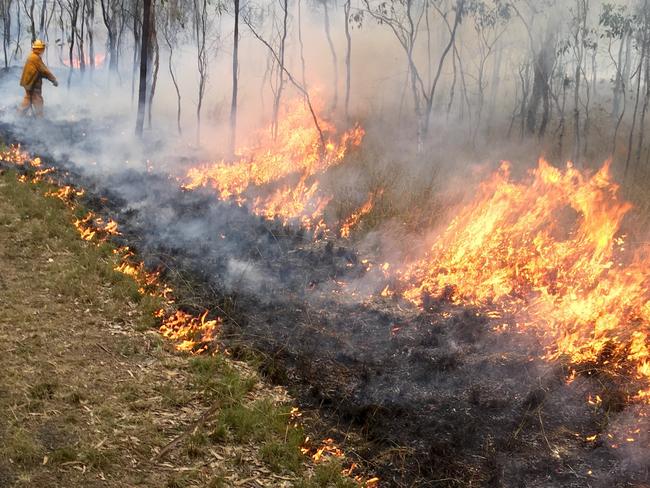
Yes, there are successes, but there have also been failures, when burns escape control and become bushfires in their own right. Recent failures in Victoria and Western Australia led to property losses; previous failures killed people.
A 2002 study of prescribed burns in the Blue Mountains between 1990 and 1997 found nearly one in three (30 per cent) had negative results; the same proportion were rated as successful, and the remaining 40 per cent were regarded as “sub-optimal”.
“It’s not just the hazard reduction and the modification of the fuel that counts; it’s also the circumstances of the weather which is a very powerful driver of the fire behaviour,” Prof Bradstock said.
Land with four or five years worth of fuel build-up may not burn effectively on a day with ideal conditions for prescribed burning (20 degrees, 20 per cent humidity, light winds), he said, but the exact same landscape with less than 12 months of fuel build-up will turn into an raging inferno on “really bad summer days, with 40 degrees, 50km/hr winds and 8 per cent humidity”.
It is, he said grimly, “one of the perverse things about fire”.
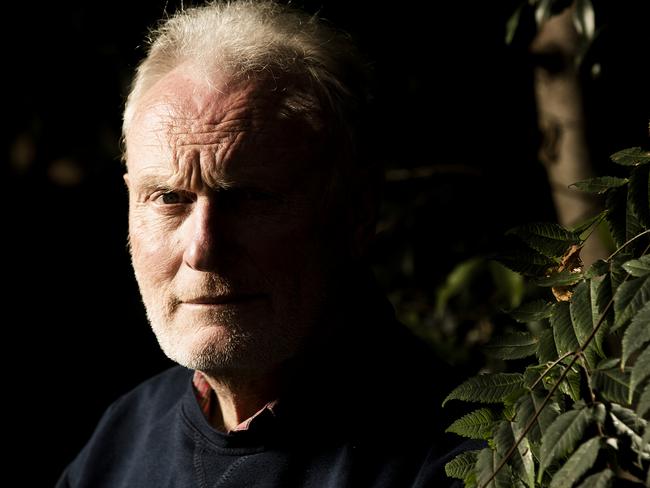
Complicating things further is the fact that those ideal days for prescribed burning are getting fewer in number.
“The weather windows are shortening because of climate change … and that means what was achievable 20 years ago may not be achievable now,” said Professor David Bowman from the University of Tasmania.
The hotter and drier days might limit the time suitable for burning, but experts said in other ways there could actually be greater scope, because the public will be more accepting of the inconveniences involved in future.
In May 2019, NSW Rural Fire Service spokesman Ben Shepherd was quoted in the media as saying prescribed burning could not be carried out on an otherwise perfect day for it, because of the absence of “clearing winds”.
Given the horror bushfire season we have had, it seems logical to presume that the general public may be more sanguine about putting up with lingering smoke from prescribed burns in future.
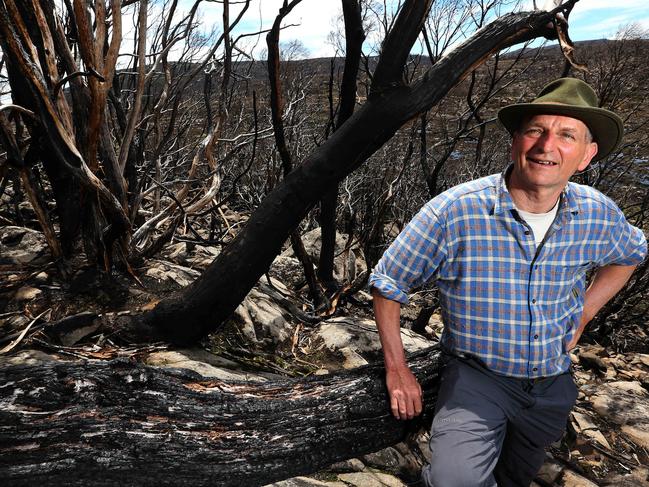
But it’s not that simple. Smoke can also cause havoc for a range of industries, from aviation to winemaking, and for some people, it’s worse than an irritation: it’s a killer.
Cardiac arrest presentations at one Sydney hospital spiked 10 per cent this summer, compared to 2017 and 2018, while an Athsma Australia survey of members after five smoky days in Sydney in May 2019 found that nearly one in five respondents (19 per cent) experienced an athsma emergency in that time.
While education campaigns and apps can help people with health conditions minimise their exposure to smoke, those concerns cannot be ignored.
Prof Bowman suggests any attempt to trample over such concerns by the proponents of hazard reduction burning will ulimtately backfire.
“To lose social licence for prescribed burning? Go hard and tell people it’s not a problem, because we have very good medical evidence now, (and people), particularly athsmatics … will completely and utterly trash your social licence for your program,” he said.
“And the trick with prescribed burning is really about the social licence, and communicating with people why you are doing this activity. Then you have buy-in and support, rather than resentment.”
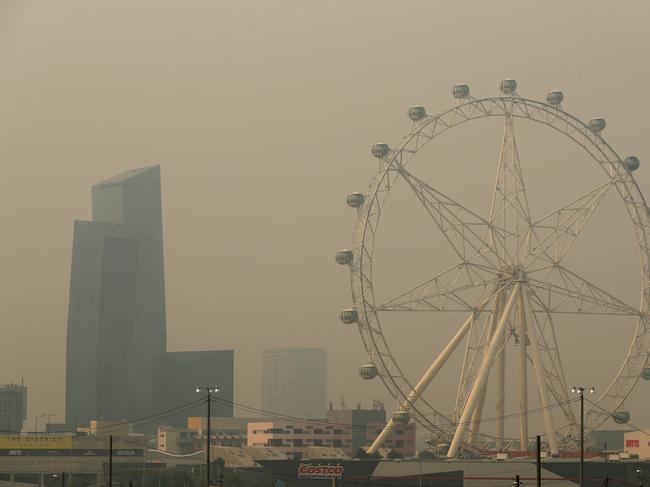
Consultation is also key in regards to the land ownership issues that inescapably arise in hazard reduction work, Prof Bowman said.
“Fire can’t see tenure. Fire can only see a firescape,” he said.
He posed the question: what do you do when one part of a bushland area to be burned might be crown land, and another part is privately owned?
“You might say we’ll just order them to do it, but that’s not our society. We have to recognise there’s liability, responsibility, rights of ownership, and so on. You can’t just bulldoze your way in. Well, you can, but then it will just blow up in your face.”
Prof Bradstock described hazard reduction burns as a “critical part of the chain, but it’s not the sole component of bushfire risk mitigation.”
Saving lives and property is a complex mix of community education and communication, hazard reduction work, fire suppression, evacuation policy and even elements such as building standards, he said, and “no link in the chain is more important than the other”.
“To some degree there’s a level of obsession with hazard reduction that is perhaps a little bit undeserving because there are many other critical elements in the package,” Prof Bradstock said.
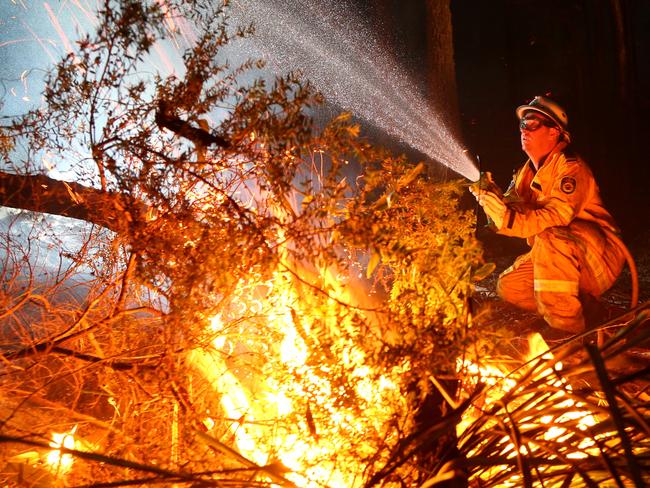
Former Fire & Rescue NSW Commissioner Greg Mullins made similar comments in January when he slammed the Prime Minister for saying hazard reduction was as important as emissions reduction.
“Hazard reduction is an important tool but it’s not enough to protect us from catastrophic bushfires driven by extreme weather. We need to take action on the root cause, worsening climate change,” Mr Mullins said.
Hazard reduction burning “mitigates some of the risk but it won’t eliminate risk,” Prof Bradstock said. “It won’t totally eliminate the chance of you getting a fire arriving at your house.”

There may be more insistent calls for hazard reduction burns in 2020 – both from the community and from politicians who want to be seen to be doing something – but in a weird irony, the actual need for them may not be as great as in some other years.
The reason is simple and bleak: because large tracts of land burned this season, they will not be as susceptible to bushfire next season.
“Our risk in general terms will be a lot lower, simply because everything burnt, right up and down the coast, “said Prof Bradstock. “Essentially in terms of the cycle of regrowth and the accumulation of fuel and the recovery of vegetation that produces that fuel, we’ll be at the bottom of the trough, and next year, risk will be low.
“That’s not to say that there won’t be areas with significant risk, but they will obviously be a lot more restricted than they were at the beginning of this season.”
Originally published as Australian bushfires: why hazard reduction burning is not a simple solution


